Forty plus years of WW2 tactical wargaming leaves an indelible mark on a person. Like most long-in-the-tooth desktop generals, I’m now so used to parsing battlefields, assessing weaponry, and weighing up odds, the process is almost instinctive. StuG there…. dead ground there… possible Pak 40 position over yonder… synapses twinkle, decisions are made, orders are issued. The ritual is so ingrained, so natural and apt, when a game prevents me from conducting it, feelings of surprise and resentment are inevitable.
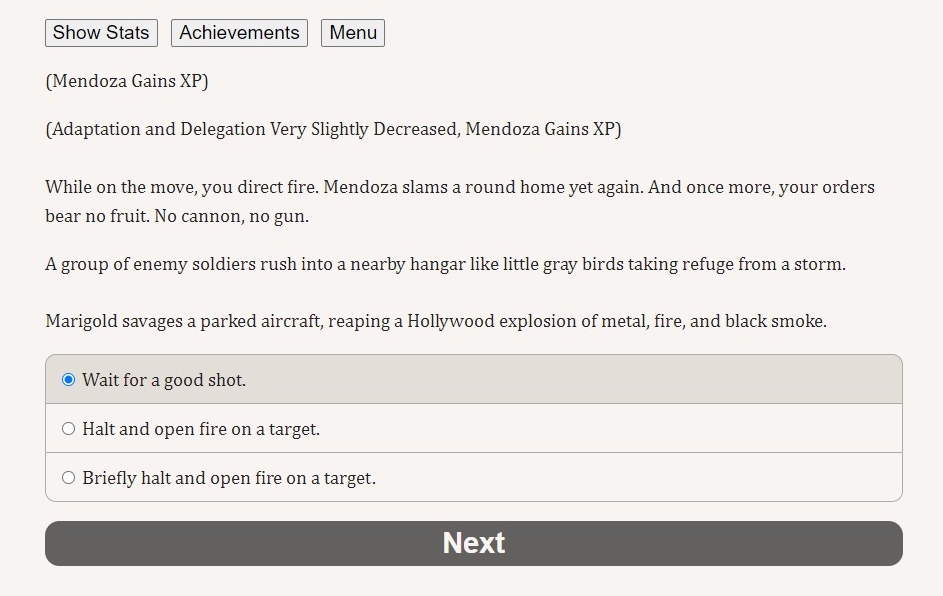
I’d argue World War II Armoured Recon, a writerly, text-based Stuart sim from the chap who penned much of Burden of Command’s fine interactive fiction, is at its best when evoking events outside of combat. In the heat of battle, too often a confusing array of tactical choices conspire with hidden dice and mysterious combat algebra, to leave me feeling baffled and fatalistic.
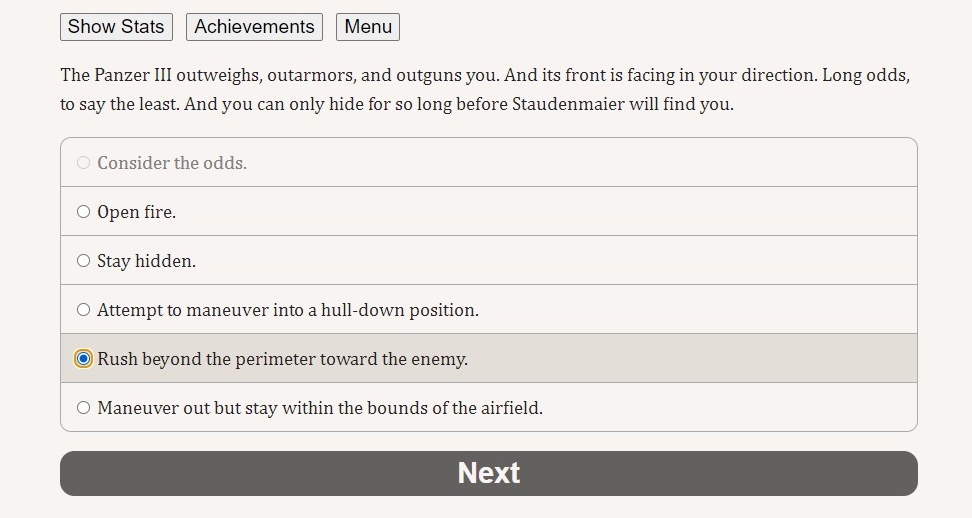
Would it be wise to get a little closer to that Panzer III? Is outflanking that Semovente practical? Is now the time to button-up? Which of these two positions offers the best sight lines? In Combat Mission… Burden of Command… Panzer Elite SE… Armoured Commander 2… I’d usually be able to answer these questions quickly and with a fair degree of certainty. In WW2AR, because tactical choices often come in the form of short, gnomic phrases, picking one can feel like your sticking your hand into a tombola drum.
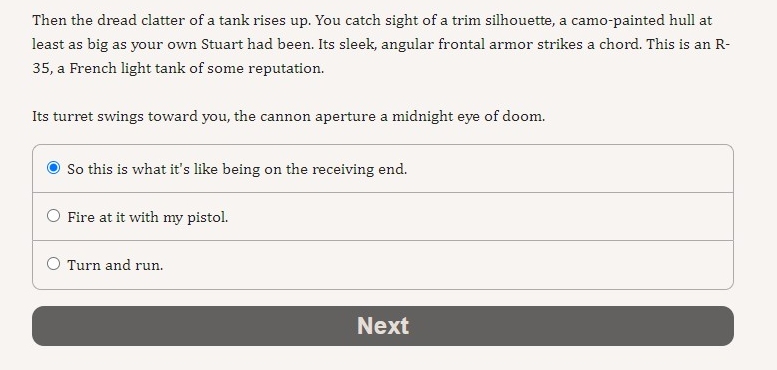
Fortunately, losing an M3 never seems to brings a North African odyssey to a grinding halt (I’m already onto Sugar Pie number three!), and the lion’s share of this interactive novel’s 900,000 words describe combat-free situations.
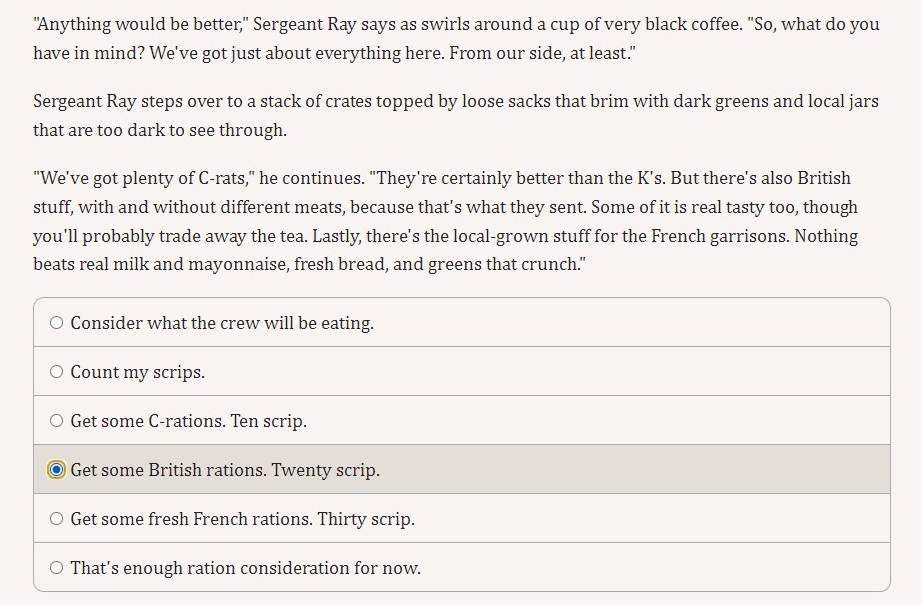
Between engagements, with endearing attention to detail, Allen Gies conjures up a world of snatched naps and awkward in-the-field maintenance, constant uncertainty and regular SNAFUs. A world in which keeping your war wagon on the road and your men safe and sated sometimes requires risky rule breaking. The myriad, thought-provoking, stat-impacting decisions nestle amongst conversations and scene-setting too well crafted to skip or skim-read.
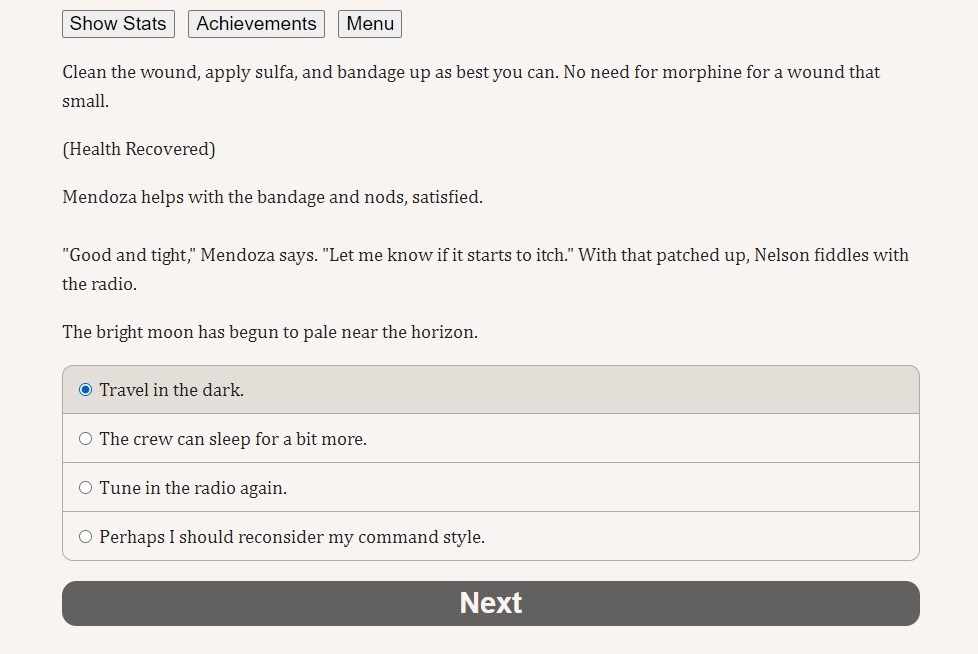
Could your three tankmates have been sketched more extensively and firmly? Possibly. After around six hours of play, I still don’t feel particularly attached to Mendoza, Nelson, and Owens. Is the text too bashful when it comes to communicating war’s grisly spectacle? Maybe. Was letting players pick their avatar’s gender, a good idea? Nothing I’ve seen so far alters the opinion I shared last week.
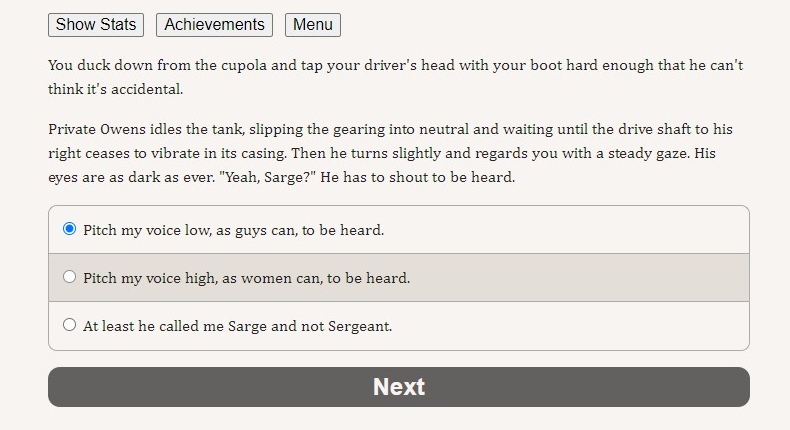
Curious to find out what would happen if I opted to play as the US Army’s only female tank commander, I’ve been Stuart stewarding as Sergeant Mary Slaughter for the past few days. Apart from being described as a “classy dame” on one occasion and addressed as “Mademoiselle” on another, I don’t think my choice has made the slightest difference to the course of the game.
In a diversion that feels positively documentary at times, this type of superficiality sticks out like a sore thumb. As commenter cederic pointed out, if the main character had been addressed as Sarge or Sergeant throughout there would have been no need for that jarring gender choice dialogue. Players could have pictured the protagonist as they pleased.
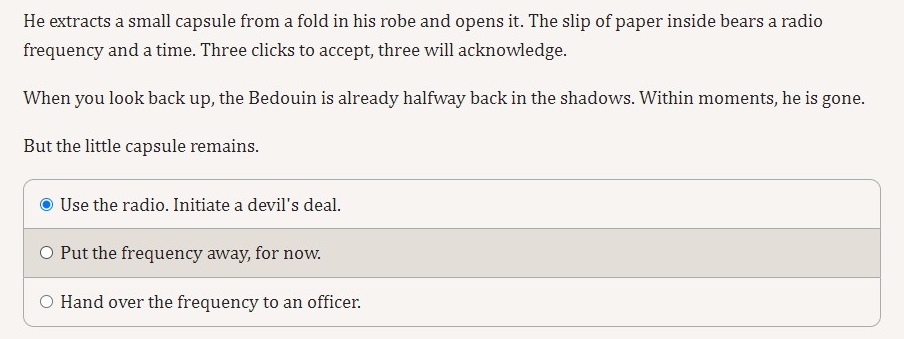
While many passages in WW2AR feel like they’ve been plucked straight out of a memoir or regimental history, there is the odd plot twist that would feel more at home in a Commando comic or Alistair MacLean thriller. Will I, I wonder, live to regret the “devil’s deal” I made with a Bedouin go-between shortly before sitting down to type this?
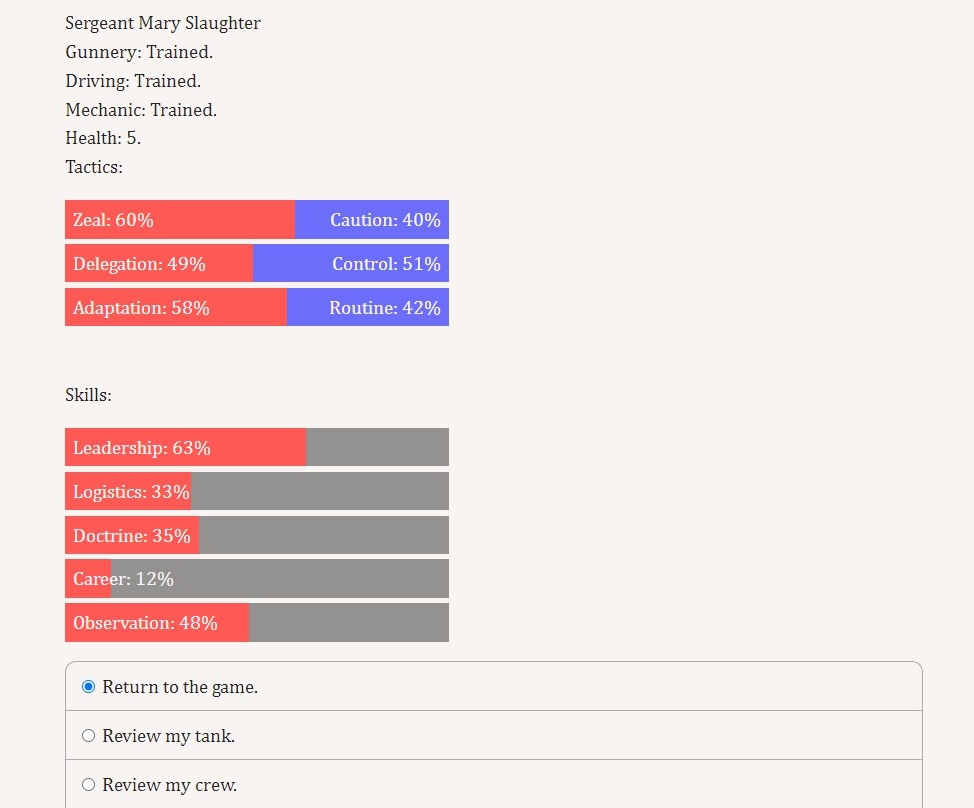
Its cryptic clashes won’t suit everyone, but anyone who enjoyed Burden of Command’s wordy windows is unlikely to regret time spent with this memorable, demo-equipped digital gamebook.

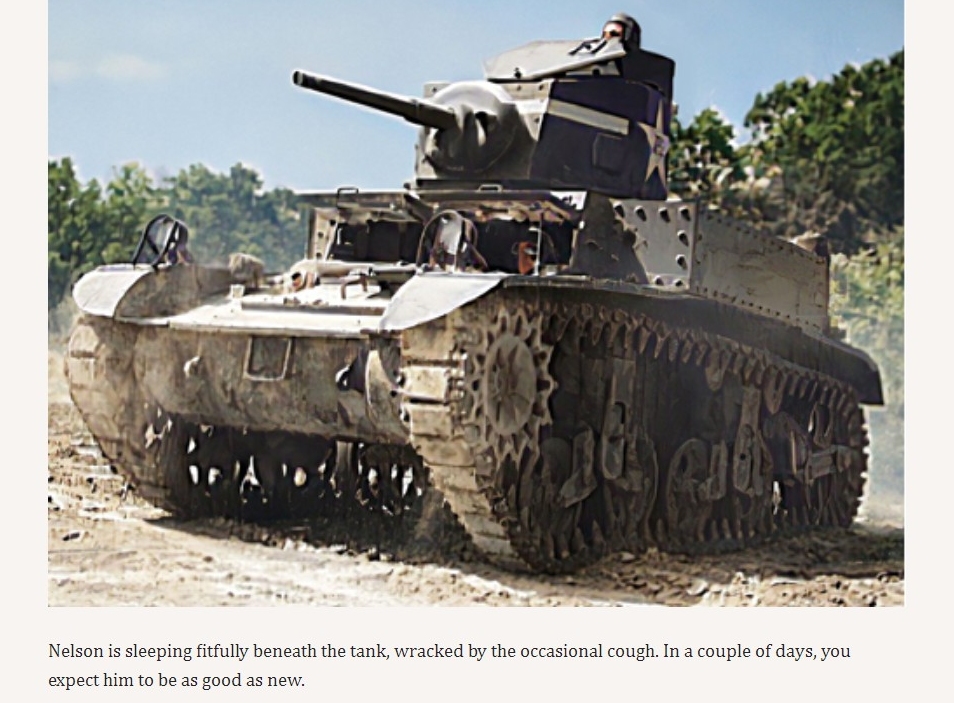
I’ve played/read it twice now and enjoyed it thoroughly but felt it was a bit too far fetched, too much.
I liked the tank maintenance, crew training and the chapter assisting the British Regiment felt convincing.
Overall, good fun.